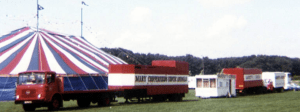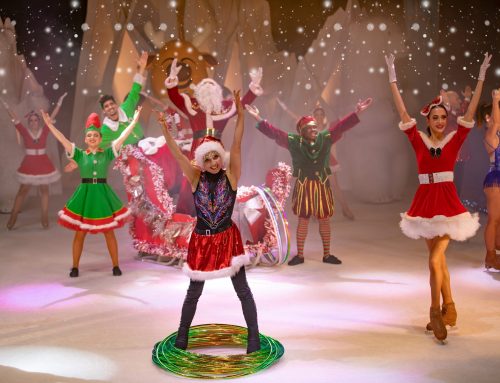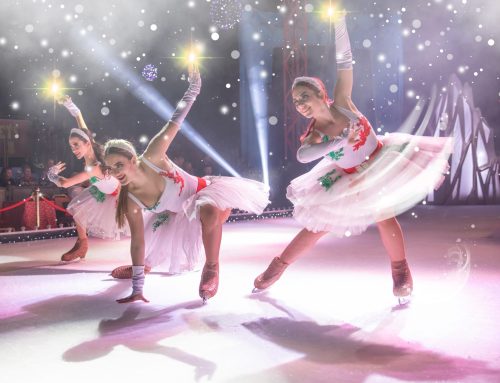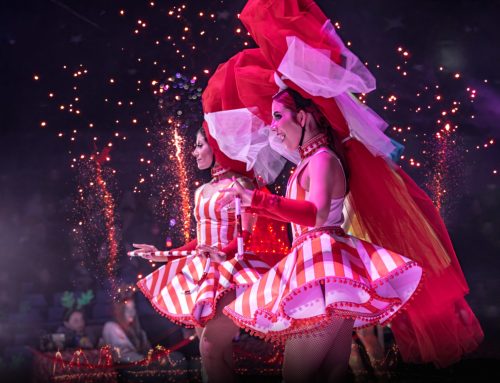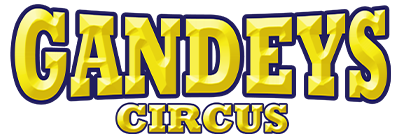Circus History
Philip Astley (1742 – 1814), born in Newcastle-under-Lyme a six-foot-tall, former cavalry sergeant major tuned showman, is often credited as the ‘father of the modern circus’. In 1768, he and his wife Patty established Astley’s Riding School in London, where Philip would teach in the morning and perform equestrian tricks. Both Philip and Patty were expert riders.
Philip’s most famous act and widely considered to be the first circus clown act, was ‘The Tailor of Brentford or ‘Tailor’s Ride to Brentford’, in which he acted out a comic journey on horseback. One of Patty’s popular tricks involved her circling the ring on horseback at speed, with swarms of bees covering her hands and arms as if she were wearing a muff.
The modern concept of a circus as a circular arena surrounded by tiers of seats, for the exhibition of equestrian acts, acrobatics, and other circus performances seems to have existed since the 18th century. The popularity of the circus grew on Easter Monday 1768 in London when Philip Astley had his first performance. Philip Astley can also be considered the first circus entrepreneur. For the modern circus one of Astley’s major contributions to the circus was setting the diameter of the circus ring to 42 feet, which is the size needed for horses to circle comfortably.
Astley never called his show a circus. That title originated with his rival Charles Hughes, who set up close to Astley’s Amphitheatre and called his own show the Royal Circus.
According to sources in England circuses were often held in a purpose-built building such as the London Hippodrome, which was built as a combination of the circus, the menagerie and the variety theatre, where wild animals such as lions, elephants, monkeys and many more would appear in the circus ring.
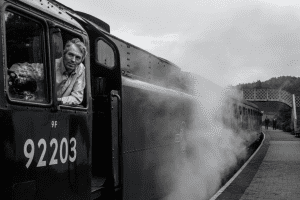 While Philip Astley is the ‘father of modern circus’, he was not the one who coined the term. That honour goes to his contemporary, Charlie Dibdin. Dibdin was born in 1745 in Southampton and was in the world of music at a young age. In 1782 Charles became a manager of the Royal Circus. This was the modern use of the word circus.Victorian Circus history
While Philip Astley is the ‘father of modern circus’, he was not the one who coined the term. That honour goes to his contemporary, Charlie Dibdin. Dibdin was born in 1745 in Southampton and was in the world of music at a young age. In 1782 Charles became a manager of the Royal Circus. This was the modern use of the word circus.Victorian Circus history
In the mid 19th Century there were many circuses operating throughout Britain. The main attraction was still animal performances which were equestrian trick riding. It was also time for a social upheaval, not only in performances but also in technology. The industrial revolution was the next way in which circuses moved on a circus train. Technological advancements facilitated communication and transportation. The Industrial Revolution allowed circuses to go from one city to another.
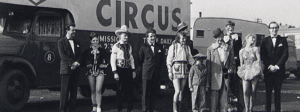 Circus Parades
Circus Parades
Larger circuses would often announce their arrival in town with a circus parade. They would advertise with their exotic animals walking through the town centre with their famous circus theme song to attract people to see their show.
Circus tent
In 1825, Joshuah Purdy Brown, a circus entrepreneur, became the first to use a large canvas tent instead of a permanent building. As circuses expanded, tent sizes grew to accommodate more circus performances which then became known as “The Big Top”.
What is the origin of the circus?
The circus is of comparatively recent origin, yet certain elements can be traced back to ancient Rome. The great Roman amphitheatres—called circuses after the Latin word for “circle”—were most often devoted to gladiatorial combats, horse and chariot races, the slaughter of exotic animals, mock battles, and other blood sports. The most spectacular of these arenas, the Circus Maximus, was in operation for more than 1,000 years.
It would seem on the surface that these exhibitions of carnage had little in common with modern circuses, yet it is from the early Roman circuses that traditions such as trained animals and the preshow parade derive.
Elsewhere, ancient peoples performed other acts associated with more traditional circus. Acrobatics, balancing acts, and juggling are probably as old as humankind itself, with records of such acts being performed in Egypt as early as 2500 BCE.
The Greeks practised rope dancing; early African civilizations engaged in siricasi (a combination of folkloric dances and acrobatics); and the ancient Chinese juggled and performed acrobatic acts for members of the imperial court. Clowns have existed in nearly every period and civilization, both as characters in farces and as individual performers.
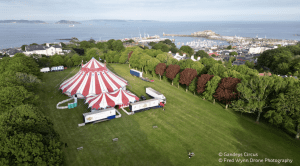 What is the most famous circus in history?
What is the most famous circus in history?
Circuses can become famous due to a combination of factors that contribute to their success and popularity. These factors may include history, innovation, production value, themes and storytelling, awards and critical recognition, circus act, branding and marketing, circus tradition and other factors.


